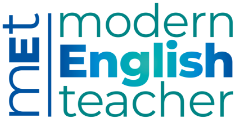Why do young learners need to be autonomous?
Faced with a coursebook and a syllabus, how can we integrate autonomous learning. In this article you can read about an approach which combines both approaches, leaving learners with regular slots to choose their own learning.

I was a teacher with more than a decade’s experience in teaching English when I faced a new challenge in my class of 9–10-year-olds. At the beginning of a new academic year I suddenly realised that we were going to have more classroom management issues than in all the previous years. My learners were getting older and more mature, and though they still respected me as a teacher, it became quite difficult at times to manage them. They did not lose interest in the process of learning; on the contrary, they all were eager to learn, but for some reason they became noisier and more argumentative. After watching and analysing their behaviour it became quite clear to me that the problem lay in their attitude: they seemed to know what was useful or interesting for them and what they considered just another boring task which would not give them a sense of achievement. At that point I did not know much about learner autonomy or personalised learning, but I had a feeling that the only way to deal with the situation was to focus on my learners’ needs and interests and sharing learning responsibilities with them.
After studying varied resources, I came across David Nunan’s works and got inspired by the idea that the curriculum should be ‘a collaborative effort between teachers and learners, where learners are closely involved in the decision-making process regarding the content of the curriculum and how it is taught’ (Nunan, 1988).
Thus, I had to transform my lessons and find a new lesson framework. Our school requires teachers to use a course book (in that class it was Academy Stars 4) and follow a curriculum. I would have been happy to try various approaches like TBL or Dogme, and I was inspired by Leni Dam’s experience in a Dutch school (Little, Dam & Legenhausen: 2017) but in our educational context with the grammar-translation approach still popular it would have been too revolutionary and would not have met our society’s expectations. What looked more realistic in the given circumstances was finding opportunities to ‘marry’ an existing course and a learner-centred approach.
So, after a while I introduced a new lesson format. We have 90-minute classes twice a week, and my idea was to break a lesson into two big parts: language input, which was given in a traditional and familiar way to learners, and independent work in accordance with learning plans. In the second part my students got a kind of ‘learning menu’, which helped them reflect on their needs and provided varied activities to their interests and aptitudes. I did not really want my students, who are quite young, to make choices only based on how entertaining a task is, but my goal was to raise learners’ awareness of their studying goals. As Henri Holec defines learner autonomy, ‘it is the ability to take charge of one’s learning’ (Holec, 1981), and my main aim was to shift the learners’ focus from having a good time to having a meaningful time in class. The scheme which I suggested was the following: at the beginning of the second phase learners get a self-reflection form, where they set personal goals while I am introducing the options. To guide them I referred to goal setting throughout the input part and when checking homework, so my learners got several opportunities to reflect on their needs. Judging from the fact that in most cases students wrote ‘practise new vocabulary’, ‘work on listening skills’, ‘write a story’, with ‘play games’ or ‘relax’ appearing quite rarely, the idea worked out. Cambridge mock exams as well as progress tests were of great help too and most mature young learners in my class started asking for extra practice in particular tasks. I must admit that with this new framework assessment in my classes became really formative, and each student got a chance to work on their own problematic areas.
All the points in the learning plan are written in the ‘I need to …’or ‘I want to …’ format. The plan always consists of two parts: the core (‘red’) is devoted to developing low order thinking skills and helps learners with remembering, understanding and applying new language. Most activities in this part provide students with various controlled and semi-controlled practice for the learners who need to work on the target language more. In the second (‘blue’) part learners find work on skills and a number of creative tasks like making posters, creating board games or doing class surveys. Although it is usually me who makes up the ‘menu’, I always encourage student initiative and they quite often adapt the original tasks to their interests, for example, drawing a comic instead of making a picture dictionary. This approach helps me address both stronger and weaker learners and provide some personalisation as students can customise tasks to their interests. While students are working, my job is to monitor and provide individual support.
At the end of the lesson students return to the self-reflection forms, where they assess their work by giving themselves a mark from 1 to 5 and decide if they have achieved their goals. As I have noticed, knowing that they will have to do this work makes learners more responsible. Compared to the beginning of the experiment, there are fewer and fewer cases when students give themselves low marks or undeserved high marks and there is a noticeable tendency for adequate self-evaluation.
It may seem that drawing up such learning plans is hard and time-consuming work. It was indeed at the beginning, but quite soon I developed some strategies which saved a lot of time and allowed me to offer learners a wide choice. One of the techniques is creating materials on wordwall.com or liveworksheets.com websites. There is also an option to turn activities into pdf worksheets for learners who for whatever reason prefer working on paper to digital technology. Extra practice worksheets which go with modern coursebooks and which I hardly ever had time for, are of a great help also, to provide targeted tasks.
The experiment in that Academy Stars 4 class worked well. Not only did I solve the problem with classroom management, as my learners felt the agents of their own learning and were happy to take responsibility for it, there were also some improvements in other areas, for example, collaborative work. David Little insists that collaboration should be obligatory and fundamental in the autonomous classroom (Little, Dam & Legenhausen: 2017) but some of my learners were reluctant to work in groups. However, when I gave them a choice to work either individually or with a partner, most of them discovered the benefits of collaboration. At the end it was their decision to work in a group, not the teacher’s.
My learners’ academic achievements were in no way lower than of their peers in other groups, which was proved by high results in summative assessment and Cambridge exams at the end of the year. Given all that, I extended the experiment to more groups of young learners and pre-teens (totalling 28 students), and the results there are on a par with the results in the first group, which allows me to claim that even at the age of nine, learners have the capacity to make decisions about their own learning and bear the responsibility for them.
References
Holec H (1981) Autonomy in Foreign Language Learning. Oxford: Pergamon
Little D, Dam L & Legenhausen L (2017) Language Learner Autonomy: Theory, Practice and Research. Bristol, UK: Blue Ridge Summit
Nunan D (1988) The Learner-Centred Curriculum. Cambridge: Cambridge University Press.



